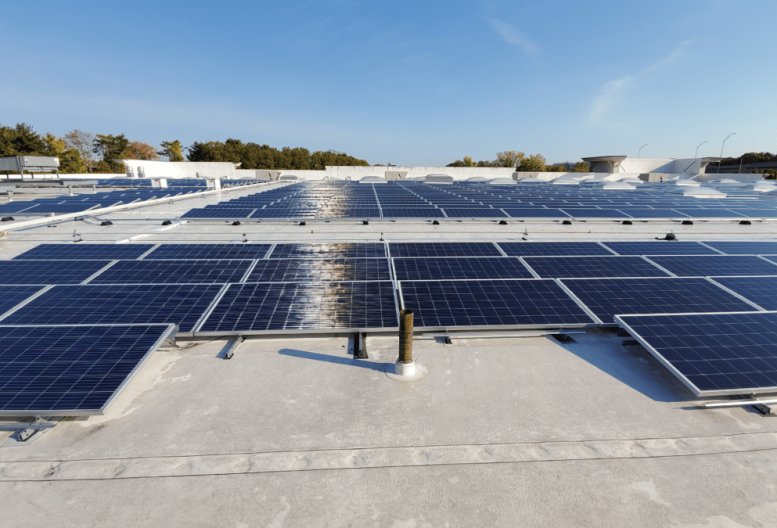Photovoltaics on the flat roof of the production hall – will it be effective?

In the face of increasing production costs, more and more owners of large, energy-intensive manufacturing plants are deciding to invest in their own renewable energy source. Most of them have buildings with extensive, flat roofs, and it is precisely on these roofs that PV panels are installed. Does this solution make sense? Is it as effective as installations on sloping roofs?
On which flat roofs can photovoltaics be installed?
Before we get to the heart of the matter, let’s ask ourselves – what exactly is a flat roof? The answer seems obvious, but it is worth keeping in mind that in photovoltaics, flat roofs refer only to those with a slope of no more than 3°. In the case of buildings with roofs that have a steeper slope, the installation of photovoltaic panels in systems designed for flat roofs can be difficult and more risky. However, if the roof is not sloped too steeply, the photovoltaic installation can be easily mounted on it – regardless of whether it is covered with membranes, tar, or concrete.
Flat roofs vs. sloping roofs
Many laypeople expect that solar panels cannot be installed on flat roofs. However, this is a myth. PV modules can be successfully installed on flat surfaces using special structures. Their task is to allow for mounting on one side and to provide the proper tilt angle of the panels and ventilation for the entire installation. This solution significantly increases the efficiency of the modules since they are optimally oriented towards the sun. In justified cases, to further increase the yields, individual modules are set in different directions.
Apart from the mounting technique described above, installations on flat roofs do not differ significantly from those on sloping roofs. Their performance is equally good and efficient. Additionally, in the case of solar power plants installed for large facilities, energy storage systems are often implemented, which allow for even greater benefits from renewable energy.
Advantages of a flat roof
Flat roofs also have an advantage over sloping roofs. They are particularly suitable for the use of double-sided modules (B-facial), which can yield up to 15% higher outputs, resulting in a faster return on investment. Double-sided PV modules allow for utilizing the solar radiation reflected from the roof surface. To achieve the best results with this solution, the roof should be properly prepared, for example, by painting it white.
Furthermore, such roof structures allow for maximizing the use of their surface area and make access to the modules easier. This can be important in case of potential failures. Installations on flat roofs are also much less visible, which has an impact on the overall aesthetics of the building.
Examples of PV system implementations on flat roofs Installations on flat roofs are already benefiting many foreign companies. An example is Panattoni Europe, a company that utilizes photovoltaics installed on many of its warehouse buildings located throughout Europe. Another interesting example is the medium-sized solar power plant owned by Atut Rental, a company engaged in the rental of construction equipment.
As a principle, a flat roof does not pose any obstacles to the successful implementation of photovoltaics in the company.
Wish to know more. Contact Energynat. E-mail: sprzedaz@energynat.pl


